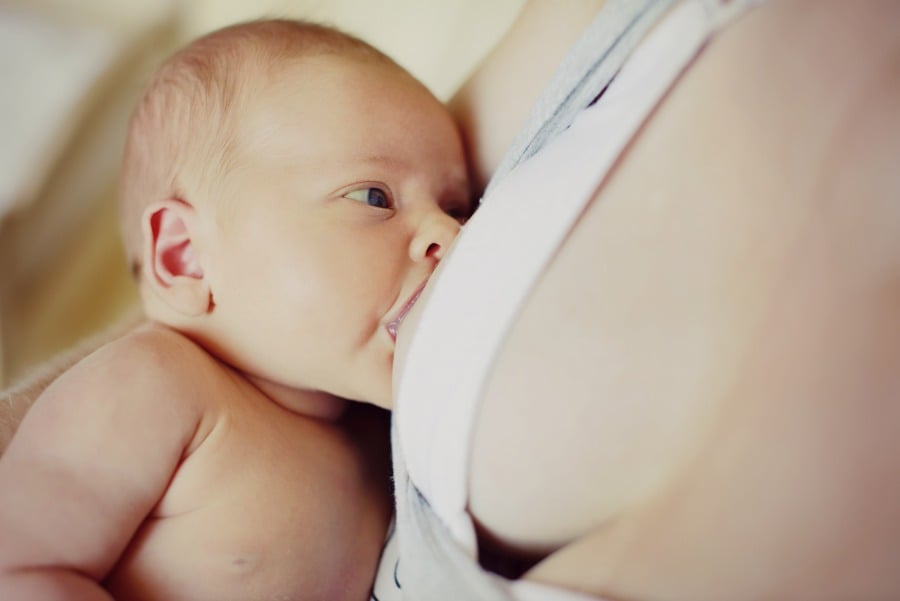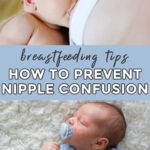How to Avoid Nipple Confusion in Newborn Babies
In the early days of breastfeeding, infants can experience nipple confusion if given bottles or pacifiers before they’ve mastered the latching-on and sucking process at the breast. For some babies, nipple confusion is not an issue. They can take the breast, different shaped bottles, and a variety of pacifiers in all shapes and sizes. For others, nipple confusion can lead to a baby refusing the breast. Here’s how to avoid nipple confusion in newborn babies:
For some babies, nipple confusion is a real concern. Give those babies a few bottles and they begin rejecting the breast. Pop a pacifier in the baby’s mouth at 2 am, and they wake up the next morning looking at the breast as if it is an alien spaceship.
So, what’s a new mom to do?
How can you know if your baby will be the one that will have nipple confusion or not? Is there a test you can give? A sign the baby will give you? Should you contact a psychic? A mind reader?
Unfortunately, the real answer is that you will not be able to tell, so what I teach my clients in the words of Ben Franklin, “An ounce of prevention is worth a pound of cure.”
Preventing – or solving nipple – confusion is an important part of your toolbox for breastfeeding success.
Breastfeeding is a learned behavior
While rooting for the breast is instinctive, it’s important to understand that breastfeeding is also a learned behavior. Some babies pick up the skills right away and develop the oral muscles needed to be able to transfer milk from the breast and into their tiny tummies, while for others, it may take a while.
Bottle feeding and breastfeeding use different oral muscles. What does this mean? It is the difference of doing sit-ups and push-ups. Both develop muscles… but different muscles (source). Some babies take a while to develop the muscles needed and to coordinate the pattern of: suck, swallow, breathe.
We all know that practice makes perfect. So, the more exposure a newborn has on the breast the more proficient they become. Also, moms need to become skillful using the breast as a feeding tool; so the more you practice the better you will get.
Milk flows more freely from a bottle
Is there a chemical in the plastic that makes babies addicted to their pacifiers and bottles? I do NOT have the answer to this. Some days, when I work with those extremely stubborn babies, I think it may be. I wish there was an “addicted to plastic anonymous” meeting these babies could attend!
Joking aside, the bottle (with the help of gravity) is an easier flow of milk. For sleepy newborns or premature babies (yes, you can breastfeed your preemie), an early bottle can sabotage your breastfeeding relationship.
The bottle nipple does have to fit farther far back into the mouth, and the tongue doesn’t have as much function as at the breast. Also different from the breast is the fact that milk keeps flowing regardless of how hard baby sucks.
Tips for preventing nipple confusion:
- Make sure you’re not in pain. If you are in pain it means the baby is not latched on well, and when you cringe the baby feels it.
- Temporarily try finger feeding baby. If you feel overwhelmed and need to have someone else feed the baby learn how to finger-feed your baby. Finger-feeding is easy to learn and does not allow for nipple confusion.
- Try not to give pacifiers. Women have breastfed for thousands of years and would have fussy babies suckle on the mom’s or dad’s finger to calm down (please wash your hands before placing in the baby’s mouth).
- Feed on demand, do not schedule your baby. Babies don’t tell time, and time is a human creation anyway. In those first weeks, if baby is hungry, don’t make him wait he needs to feel that his needs are fulfilled (remember in the womb we assume the baby never experienced hunger since the placenta fulfilled all his needs around the clock).
- Make sure baby’s nose is not stuffy. Baby’s mouth creates a complete seal around the breast. If she has a stuffy nose, she can feel pressure in her ears while breastfeeding. She may choose the bottle over the breast then because with the bottle she can release suction to get a breath of air and then go right back on the bottle.
- Offer instant gratification. Manual expression or a quick breast pumping can stimulate your milk ejection reflex and get the milk flowing before baby latches on. Baby will find a steady flow of milk after the first few sucks.
- Have confidence. Finally, be self-assured that you can do it! Tune in and trust your instincts. You were created to breastfeed. Don’t be afraid to ask for help. If you don’t feel confident a lactation could be your lifesaver.
After 25 years of working with breastfeeding moms, I’ve found that if a baby is given 6 weeks exclusively on the breast, he can most likely switch to a bottle as needed and can use a pacifier when the situation arises. So no worries – you’ve got this!


